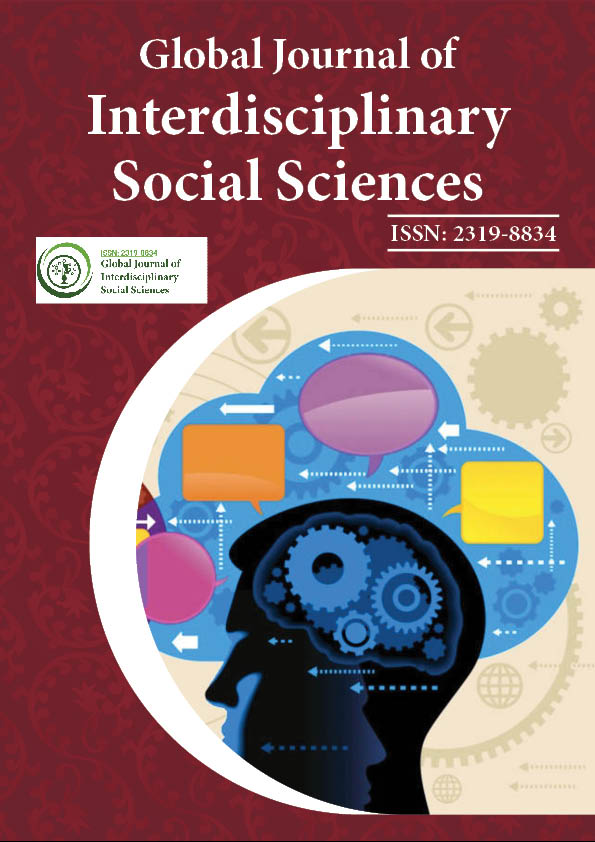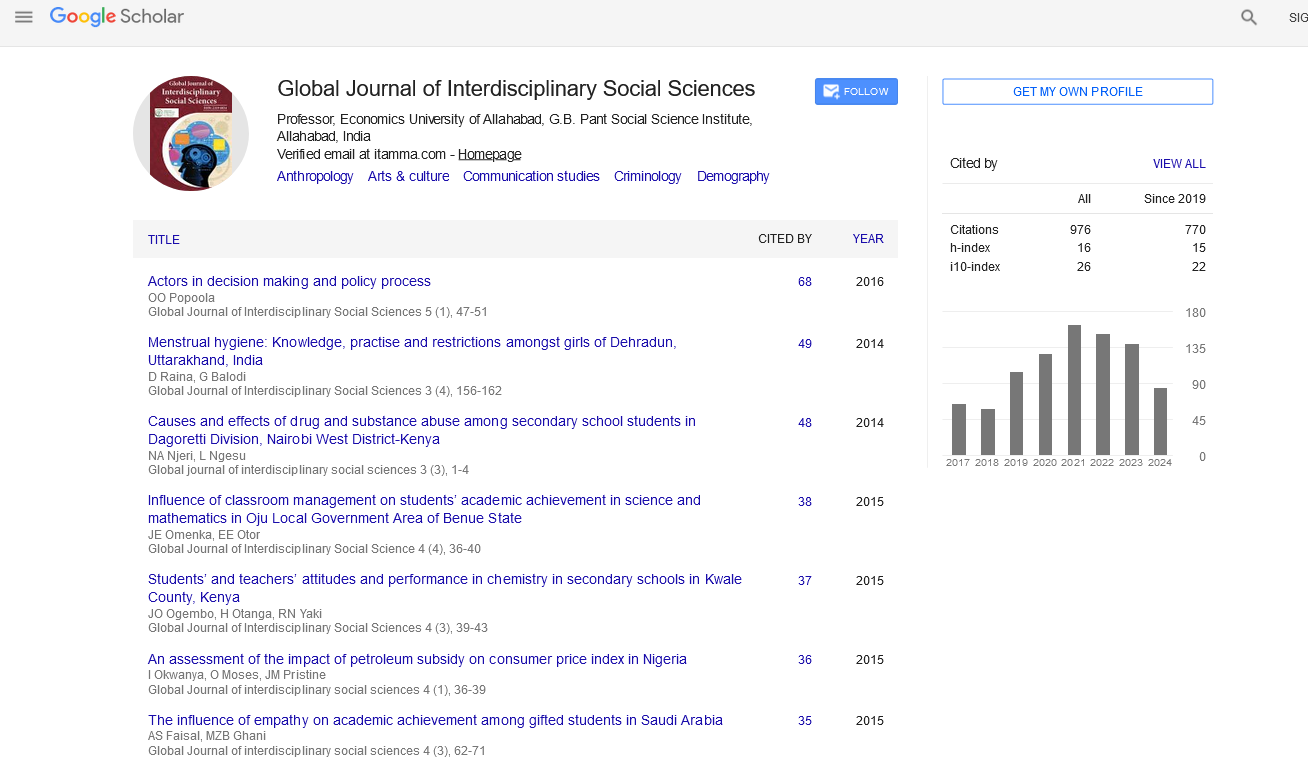Indexed In
- JournalTOCs
- Google Scholar
Useful Links
Share This Page
Journal Flyer

Open Access Journals
- Agri and Aquaculture
- Biochemistry
- Bioinformatics & Systems Biology
- Business & Management
- Chemistry
- Clinical Sciences
- Engineering
- Food & Nutrition
- General Science
- Genetics & Molecular Biology
- Immunology & Microbiology
- Medical Sciences
- Neuroscience & Psychology
- Nursing & Health Care
- Pharmaceutical Sciences
Opinion Article - (2024) Volume 13, Issue 1
The Influence of Curated News Sources on Pandemic-Related Conspiracy
Maria Rossi*Received: 28-Feb-2024, Manuscript No. GJISS-24-27881; Editor assigned: 01-Mar-2024, Pre QC No. GJISS-24-27881 (PQ); Reviewed: 15-Mar-2024, QC No. GJISS-24-27881; Revised: 22-Mar-2024, Manuscript No. GJISS-24-27881 (R); Published: 29-Mar-2024, DOI: 10.35248/2319-8834.24.13.084
Description
The outbreak of the COVID-19 pandemic significantly reshaped the global socio-political framework, driving the spread the proliferation of conspiracy beliefs and misinformation. This phenomenon is complexly linked to selective media exposure, where in individuals gravitate toward information sources that confirm their pre-existing biases, a psychological tendency often referred to as confirmation bias. This article explains the historical context of conspiracy theories, identifies important persons who have contributed to the discourse on media and misinformation and examines both the positive and negative implications of selective media exposure during the pandemic.
Historically, conspiracy theories have arisen during times of crisis, often as a means of attempting to rationalize complex socio-political events. The COVID-19 pandemic, marked by unparalleled uncertainty and fear, created fertile ground for conspiracy theories to prosper. One salient example is the belief that the virus originated in a laboratory setting, which, despite being supported by various scientific inquiries, was formed by a selective media narrative that emphasized this theory while minimizing alternative explanations. The historical patterns of pandemics, such as the Black Death in the 14th century, illustrate that conspiracy theories often surface amid crises, wherein societal trust in institutions erodes and anxieties amplify.
In academia and psychology have contributed to our understanding of how selective media exposure propagates these beliefs. Researchers have extensively studied the role of social media platforms in influencing public belief systems. Platforms such as Facebook and Twitter, with their algorithm-driven content curation, often expose users to a homogenous set of viewpoints. This echo chamber effect reinforces existing beliefs and cultivates an environment where misinformation spreads. Moreover, the role of influential persons who support conspiracy theories significantly magnifies their reach and acceptance among the public.
The impact of selective media exposure brings forth a duality of consequences. It enables individuals to construct their narratives around complex issues, encouraging a sense of agency and belonging within certain communities. This aspect can yield positive outcomes, such as motivating like-minded individuals to engage in social movements or promoting critical discussions around the failures of public health institutions. For example, some online communities mobilized around conspiracy beliefs calling for transparency and accountability from governments and pharmaceutical companies. These discussions, although often steeped in misinformation, highlight a broader discontent with authoritative narratives and a demand for more significant participation in public discourse.
Conversely, the disadvantages of selective media exposure are deeply impactful. The dissemination of false information can lead to dangerous public health behaviors, including vaccine hesitancy and the rejection of scientifically validated health measures. The World Health Organization has referred to the infoemic-the overwhelming influx of both information and misinformation-as a critical threat to effectively combating the pandemic. The misinterpretation of data and reliance on conspiratorial explanations for health outcomes can erode public trust in essential health initiatives. This erosion can have dire consequences, prolonging the pandemic's impact and delaying recovery efforts.
Furthermore, the psychological foundations of conspiracy beliefs suggest a deep need for individuals to establish control in times of uncertainty. The pandemic provided reduced material for conspiracy theorists to exploit, with many finding comfort in the belief that they could uncover hidden truths amid disorder. Important psychological theories, such as social identity theory, clarify how individuals' group identities can form their perceptions and preferences for certain media narratives. Researchers have suggested that individuals who strongly identify with particular communities are more likely to requires and support media that aligns with their group’s worldview, further entrenching conspiracy beliefs.
In conclusion, the association between conspiracy beliefs and selective media exposure during the COVID-19 pandemic illustrates a complex exchange between individual psychology, media influence and societal dynamics. Historical patterns reveal that crises often catalyze the emergence of conspiracy theories, while important academic contributions provide insight into the the mechanisms that facilitate their spread. The positive aspects of media exposure include promoting community and encouraging critical discourse; however, the negative ramifications-particularly regarding public health-highlights an important need for enhanced media literacy and critical thinking skills.
Citation: Rossi M (2024). The Influence of Curated News Sources on Pandemic-Related Conspiracy. Global J Interdiscipl Soc Sci. 13:084.
Copyright: © 2024 Rossi M. This is an open access article distributed under the terms of the Creative Commons Attribution License, which permits unrestricted use, distribution, and reproduction in any medium, provided the original author and source are credited.

